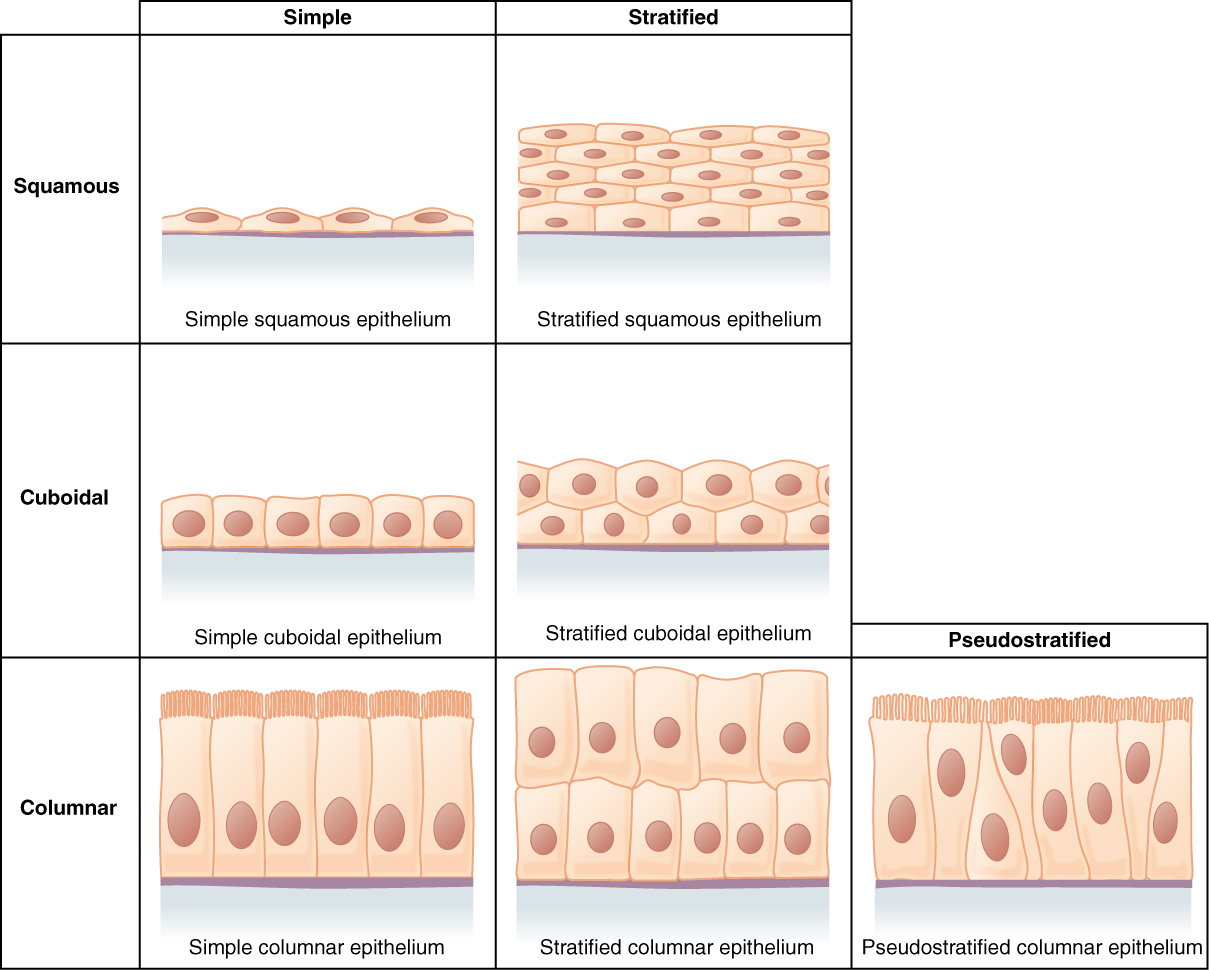| << Chapter < Page | Chapter >> Page > |
Epithelial tissues are classified according to the shape of the cells and number of the cell layers formed ( [link] ). Cell shapes can be squamous (flattened and thin), cuboidal (boxy, as wide as it is tall), or columnar (rectangular, taller than it is wide). Similarly, the number of cell layers in the tissue can be one—where every cell rests on the basement membrane, or more than one, which is a stratified epithelium and only the bottom layer of cells rests on the basement membrane. Pseudostratified (pseudo- = “false”) describes tissue with a single layer of irregularly shaped cells that give the appearance of more than one layer. Transitional describes a form of specialized stratified epithelium in which the shape of the cells can vary.

The shape of the cells in the single cell layer of simple epithelium reflects the functioning of those cells. The cells in simple squamous epithelium have the appearance of thin scales. Squamous cell nuclei tend to be flat, mirroring the form of the cell. Simple squamous epithelium, because of the thinness of the cell, is found where rapid passage of chemical compounds is observed. Small molecules, but not large ones can easily pass through the thin, single layer of cells. Simple squamous epithelium makes up the alveoli of lungs where gases diffuse into and out of the blood. Segments of kidney tubules which filter waste from the blood are made of simple squamous epithelia. The lining of capillaries are also made of simple squamous epithelial tissue. A simple squamous epithelium forms the surface layer of the serous membrane that lines body cavities and internal organs. Its primary function is to provide a smooth and protective surface. Serous membrane cells are squamous epithelial cells that secrete a fluid that lubricates the membranes.
In simple cuboidal epithelium is composed of a single layer of square shaped cells. The nucleus of the box-like cells appears round and is generally located near the center of the cell. These cells are larger than squamous cells and more organelles. These organelles produce ATP and make new proteins. These epithelia are active in the secretion and absorptions of molecules. Simple cuboidal epithelia are observed in the lining of the kidney tubules and in the ducts of glands, like the sweat glands.
In simple columnar epithelium is made of a single layer of tall thin cells. The nucleus of the tall column-like cells tends to be elongated and located in the bottom of the cells. Like the cuboidal epithelia, this epithelium is active in the absorption and secretion of molecules. Simple columnar epithelium forms the lining of much of the digestive system. In the digestive system this tissue secretes enzymes and absorbs water and nutrientts some sections of the digestive system and parts of the female reproductive tract. Ciliated columnar epithelium is composed of simple columnar epithelial cells with cilia on their apical surfaces. These epithelial cells are found in the lining of the fallopian tubes and parts of the respiratory system, where the beating of the cilia helps remove foreign matter.

Notification Switch
Would you like to follow the 'Histology' conversation and receive update notifications?